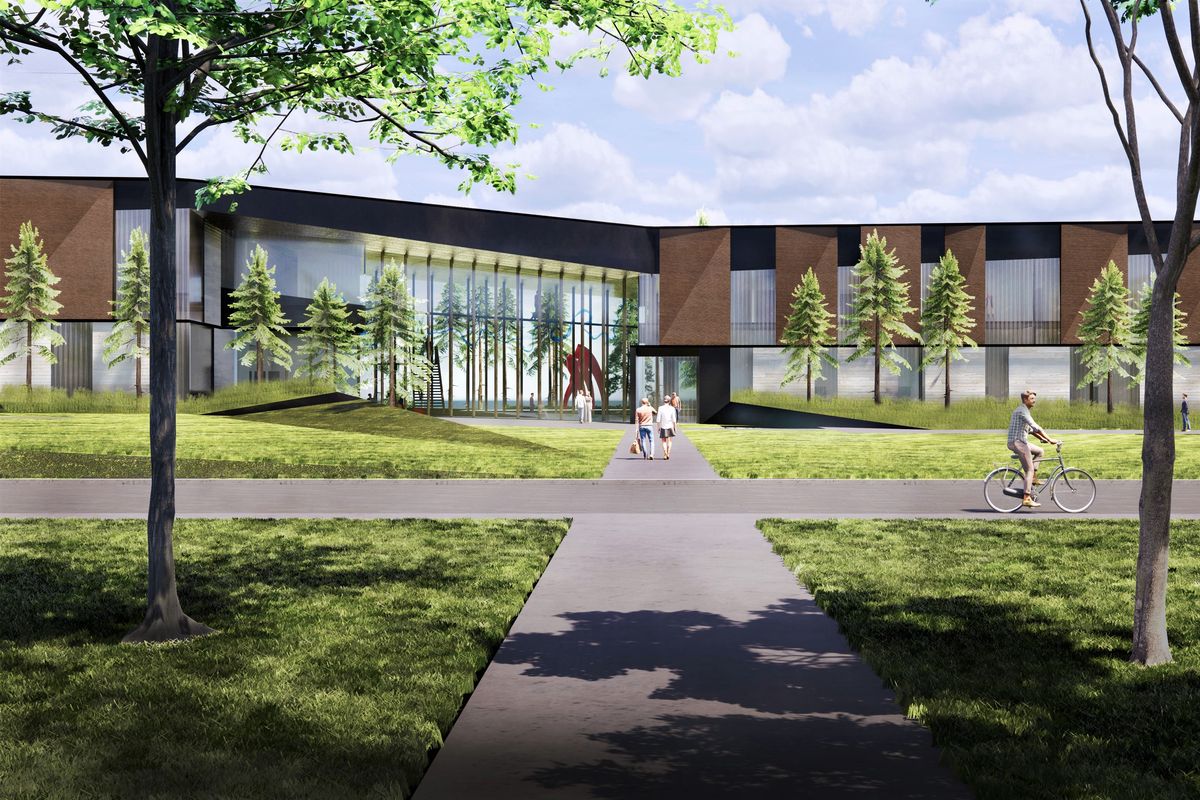‘Jewel of the college’: Spokane Falls Community College ‘excited’ for new fine arts, photography facility

The building used by Spokane Falls Community College’s photography program dates back more than 90 years ago as the dispensary for Fort George Wright.
The building was constructed in 1930 by the U.S. Army. More than 30 years later, the college’s Fine Arts Building was originally used as a music facility in 1965, according to the college, with an addition completed in 1991.
Needless to say, neither building was designed for photography or fine arts – something the college has been thinking about addressing for at least a decade, said Bonnie Glantz, dean of visual and performing arts.
The college has made three separate attempts, dating back to 2009, to secure state funding for construction of a combined fine and applied arts building. Third time was the charm for SFCC, as state legislators this year approved $19.3 million as part of the state’s capital project budget. The $42,169,000 project was previously approved for $22,827,000 million in state capital funding, said Clinton Brown, director of capital construction.
“Some of the faculty that started this process have since retired,” Glantz said, “so it’s been a long time coming.”
The new 60,000-square-foot fine and applied arts facility will have classrooms, labs, offices, exhibition space, studios, dark rooms and specialty storage areas, as well as an art gallery and photo gallery in the lobby.
According to pre- and post-construction calculations, SFCC will eliminate 110 parking stalls, Brown said. Glantz said studies have found the area will have adequate spaces.
“People will just have to learn to park in different spaces, mainly,” she said.
The existing photography building will be torn down to make way for the new structure. Brown said the new facility will be nearly six times larger.
Phase 1 involved moving photography faculty and students to a temporary space in the college’s human services building, Brown said. The project is in Phase 2, during which the photography building is scheduled for demolition by June.
Construction of the new facility is set for Phase 3, tentatively scheduled from August 2021 to September 2023, Brown said. The fourth and final phase, tentatively set between January and June 2024, involves the demolition of the existing fine arts building.
“The arts have been a big emphasis for a long time at the college,” Glantz said. “We anticipate with this new building, which is just going to be gorgeous – out there on the rim of the college campus, looking out across the space where the river flows – that’ll be just a jewel of the college and draw more people from the community out to events that we hold on our campus.”
SFCC is the only college in the state that offers an associates degree program in fine arts, college officials have said.
Glantz said the degree program usually boasted about 90-100 students prior to the COVID-19 pandemic, serving hundreds more via studio and art history courses needed for degree requirements.
Specific issues with the fine arts and photography buildings, Brown said, include roof leaks, a lack of fire suppression, restroom size, plumbing issues, accessibility deficiencies and failure-prone power systems.
The photography building, specifically, has particularly narrow hallways and only three faculty offices, meaning the program’s adjunct faculty members (of which there are five to seven, depending on the quarter) have to share a single space, she said. The building also has just two classroom spaces, one of which is made with temporary walls and an open ceiling in the facility’s photo studio.
“The classroom space has been horribly inadequate because it’s right there in the middle of the studio,” she said. “If you have folks working in the studio shooting, it’s conflicting with the people trying to listen to their teacher’s lecture.”
Between photography and digital media production, which will relaunch as digital filmmaking next fall, Glantz said the photography AFA degree program typically has about 60-70 students, with many others taking Intro to Photo and Digital Photo classes.
“Over my 10 years (as dean), even though enrollments have generally gone down, these two programs are still holding steady and adapting to the current climate,” Glantz said. “It’s very rare for a community college to have eight full-time teaching faculty in a community college art program. It just has decades of being a really strong program and a really strong part of the art community in the Spokane area.”
With the new art gallery, Glantz said SFCC is looking to continue a tradition of hosting strong community art shows and exhibits.
Glantz said the college is in the process of replacing longtime gallery director Tom O’Day, who retired last year.
“This is not just a space for the college and the college students, but also a space for the arts community in Spokane,” she said. “I’m just really excited for what the new facility can do to enhance these already strong programs and to enhance the arts in the Spokane area.”